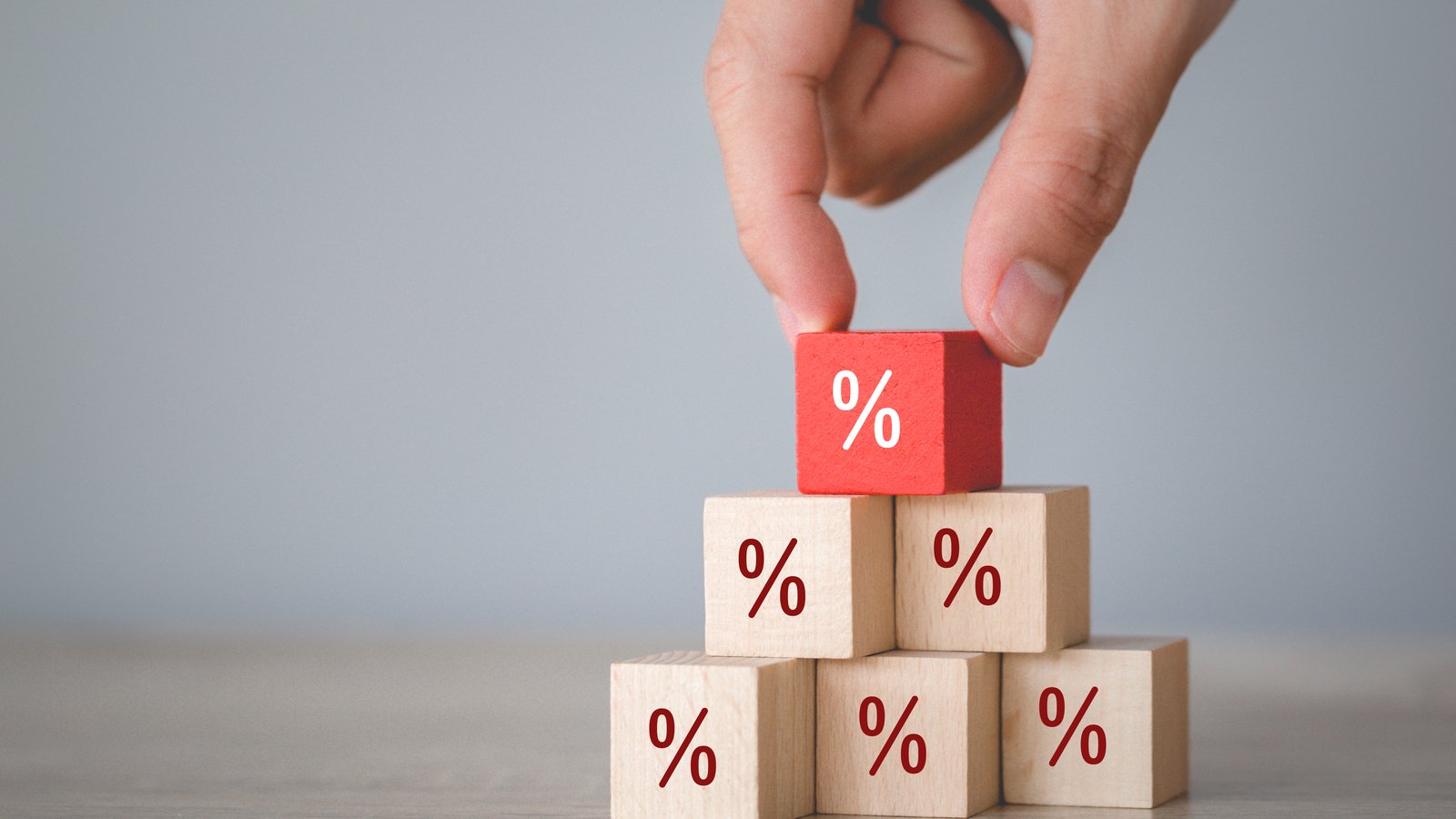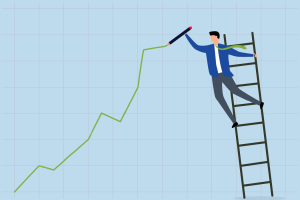
The 10-year Treasury yield soars … the economy is running hotter than Wall Street wants … why Luke Lango isn’t worried about reflation fears … the level to watch for the 10-year Treasury yield
The market suddenly feels wobbly, and we can attribute it to one thing…
The soaring 10-year Treasury yield.
As I write Tuesday morning, this yield has jumped to 4.36%. It’s trading at its highest level since November.
For newer Digest readers, the 10-year Treasury yield is the most important number in the investment markets.
The higher it climbs, the more pressure it puts on most stock prices because a higher yield means a higher discount rate, and that lowers stocks’ current valuations.
A higher 10-year Treasury yield also hurts stocks because it entices some investors to pull their money out of stocks to benefit from this generous “risk free” higher yield.
So, why is the 10-year Treasury yield climbing?
Here’s CNBC:
The moves come after manufacturing in the U.S. expanded for the first time in 17 months, according to data released Monday by the Institute for Supply Management.
The ISM manufacturing index rose to 50.3, up from 47.8 in February and significantly better than the 48.1 Dow Jones consensus estimate.
The index measures the percentage of companies reporting expansion against contraction, so anything over 50 indicates growth.
For some perspective on this, let’s turn to our hypergrowth expert, Luke Lango. From yesterday’s “Daily Notes” in Luke’s Innovation Investor service:
The economy is clearly re-strengthening. Reinflation fears are consequently perking back up. Traders are paring back their rate-cut bets, too.
In response, yields shot up [yesterday] while stocks dropped. Large-caps proved a bit more resilient. Small-caps – which are more rate-sensitive – dropped the most. Makes complete sense.
We don’t think these dynamics last much longer.
The general fear is that inflation is going to pick back up in a worrisome manner. We just don’t see that in the data.
Across the board, we see inflation stabilizing around its long-term “normal” levels – and with interest rates as high as they are and consumers broadly as cautious as they are, we just don’t think there’s enough ammunition in the demand pipeline to cause inflation to budge much higher from here…
Therefore, we think the outlook remains for the inflation “problem” to continue to fade in the coming months, allowing the Fed to indeed cut rates by the summer while the economy sustains positive growth – creating a uniquely powerful macroeconomic dynamic which should spark a huge stock market rally, especially in rate-sensitive stocks like growth stocks, tech stocks, biotech stocks, crypto stocks, and small/mid-cap stocks.
To Luke’s point on “positive economic growth,” this morning’s jobs report shows a robust labor market
The number of job openings in the U.S. during February came in at 8.8 million. While job openings have shrunk from a record 12 million in 2022, this 8.8 million reading is a healthy number, showing plenty of labor market strength.
Here’s more from MarketWatch:
…The trend in job postings gives clues on the health of the labor market and the broader economy. New openings are still much higher now than they were before the pandemic started in 2020…
The jobs market isn’t red hot like it was a few years ago. Yet plenty of jobs are available, lots of companies are still hiring and unemployment is very low.
Meanwhile, this morning’s factory orders report provided more data reflecting a strong economy.
The Commerce Department reported that orders for manufactured goods jumped 1.4% in February. This comes after two straight monthly declines. This 1.4% figure also topped the 1% gain expected by economists surveyed by the Wall Street Journal.
Bottom line: We’re continuing to experience a strong economy.
But if we look at it from the other angle, is it too strong?
Wall Street wants the economy to walk a tightrope – be strong enough to avoid a recession while maintaining reasonable growth…but not be so strong that it gives the Federal Reserve a reason to pause its planned interest rate cuts this year.
The recent data we’re seeing skews toward “too strong,” hence today’s troubled market and rising 10-year Treasury yield.
Circling back to that 10-year Treasury yield, where does it go from here, and what does that mean for stocks?
Let’s go back to Luke:
The most important level for the 10-year Treasury yield over the past few months has been 4.33%. It has hit its head on this critical technical resistance level four times over the past two months.
It was rejected all four times. [Yesterday], it soared back to 4.33% for a fifth test at this major technical resistance level.
A break above 4.33% would be indicative of a trend reversal for yields, and would set the stage for a further yield surge and sizable stock market drop.
Another rejection here would set the stage for the opposite. This is very important to watch over the next few days. As I write Tuesday morning, this yield is slightly higher, up to 4.36%. But earlier in today’s session, the yield climbed as high as 4.40%.
To Luke’s point, if we don’t see some immediate relief here, the market is likely to pull back even deeper than what we’re seeing today.
But here’s why Luke thinks we’ll get that relief in the 10-year Treasury yield:
The best fundamental proxy for the 10-year Treasury yield over the past several decades has been the summation of the market’s implied five-year-forward inflation expectations and the neutral rate, or R*.
Right now, that summation is running around 2.9% and dropping. The 10-year yield is up at 4.3% and rising.
According to this relationship, yields are fundamentally detached and should drop to 3% over the next few quarters.
Keep your eye on this yield. Its direction will drive the market over the next several weeks.
Even if are in for a deeper correction, maintain your perspective
While it’s always important to mind your stop-losses, remember that market wobbles are just part of the game. For long-term investors, they’re non-issues – even buying opportunities.
Charles Schwab put some numbers on this. In a study done in 2022, it found that pullbacks of 10% or more occurred in 10 of the prior 20 years. The average drawdown was 15%.
And what happened in the wake of those corrections?
Here’s Schwab:
Since 1974, the S&P 500 has risen an average of more than 8% one month after a market correction bottom and more than 24% one year later…
Despite these pullbacks, however, stocks rose in most years, with positive returns in all but 3 years and an average gain of approximately 7%…
Investing in a diversified portfolio and maintaining the discipline to stick with your longer-term plan through these periods of volatility are among the keys to long-term investment success.
Luke shares this same opinion. That’s why he’s recommending that his Innovation Investor subscribers view today’s market wobbles as an opportunity, not a threat.
On that note, we’ll give Luke the final word today:
The market is just a little worried about reinflation and consequently reducing its hopes for multiple rate-cuts in 2024. Stocks are dropping in response.
But we believe this bout of reinflation will prove small, temporary, and ultimately unproblematic. Once the data proves that out in the coming weeks and months, reinflation fears will disappear and traders will re-up their rate-cut bets.
That’s why, right now, we’re staying on the offensive with our investment strategy. We’ve been aggressive with our recommendations over the past few weeks, and we plan to stay aggressive over the next few weeks, too.
This is buying season. The moves we make today could determine how much money we make by the summer.
So… let’s make the right moves now!
Have a good evening,
Jeff Remsburg






